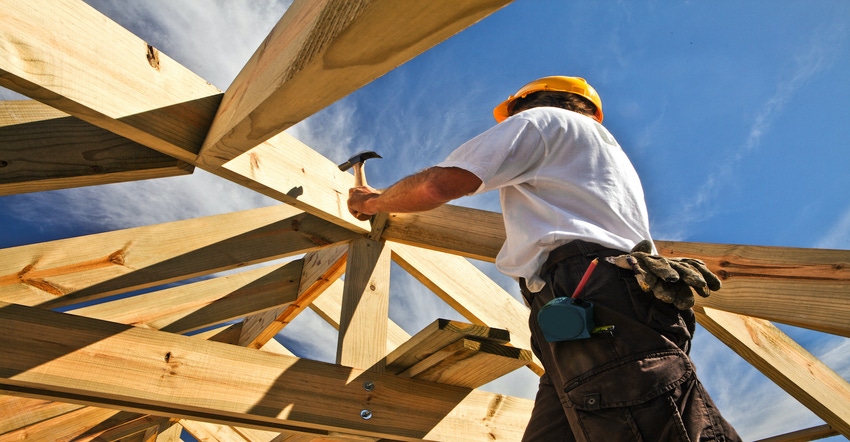How Roofers are Weathering 'Ongoing, Relentless' Supply Chain Issues
Despite supply chain issues that have caused shortages of everything from shingles to nails along with spiraling costs, roofers seem to be weathering the economic storms.
May 18, 2021

Roofers are nothing if not resilient. And the latest data from the NRCA combined with an IRE Business Update Flash Poll back up that reputation.
Despite what one roofer described as “ongoing and relentless” supply chain issues that have caused shortages of everything from shingles to nails along with spiraling costs, roofers seem to be weathering the economic storms.
At least so far.
"What the industry is seeing is unprecedented in the 46 years I have been in the industry,” said Rod Petrick, president of Ridgeworth Roofing Co. Inc., Frankfort, Ill., and NRCA’s board chairman. “We are seeing weekly updates with pricing increases and availability pushed ours for months. I had recently seen a manufacturer's email which mentioned increase on certain products could be 100%.”
An unscientific IRE Business Update Flash Poll revealed that 94% of roofers are currently experiencing supply chain issues.
For now, though, such volatility isn’t wholly dampening demand, at least based on the most recent Re-Roofing Market Survey from NRCA. According to the association:
Nearly 300 respondents completed the eight-question survey during two weeks in April; nearly two-thirds of responses came from contractors, and the balance came from roof consultants. The results indicate market conditions generally are improving for the roofing industry in the face of the global COVID-19 pandemic.
Some topline excerpts of the survey:
42% of all respondents indicated their customer inquiries increased during the first quarter of 2021 compared with the same quarter in 2020. 21% of respondents reported a decrease in customer inquiries during the same period, and 37% indicated no change in activity;
The survey revealed a similar trend for project contracts with 41% of respondents reporting an increase during the first quarter of 2021 compared with the same quarter in 2020 and 24% reporting a decrease in project contracts during the same period;
18% of roofing contractors reported no project backlogs, 38% reported project backlogs of one to two months and 24% reported project backlogs of three to four months.
Reports from roofers themselves back up those somewhat encouraging figures, along with some of the red flags they raise around shrinking project backlogs.
Derric Stull, president/owner of Ridge Valley Exteriors, Inc. in Kennesaw, Ga., reported: "Though it is not daily, it surely feels like daily we are battling shortage notices, price increase announcements, etc.
"Among the biggest challenges we are facing is product/color availability. This is causing some real challenges in scheduling and coordinating installs.
"We are combating the challenges of supply chain shortages in a couple of ways:
We are working extremely closely with our distribution partners. We are communicating daily with them on what we see coming down the pipeline for new business, to get ahead of ordering schedules and lead times;
We have moved our installs out farther. Historically we try to run 2–3-week lead times. In today's environment, we are moving full re-roof installs out 3-6 weeks to ensure we have product on the ground for our crew team members;
We started bulk buying products in Q4 of 2020 to combat what we thought would continue with supply chain shortages."
Petrick echoed those strategies. “We have also started to take factory directs to our shop if the project is not ready," he said. "This allows us to start as soon as possible once notified that the project is ready.”
“We are now placing orders as soon as contracts hit our office. We had placed an order yesterday for a project and were told possibly late August or early September for the insulation," he added. "This will not be acceptable to our client, so we now are forced to look at other options.”
Despite these significant challenges, Petrick, like many roofers, remains optimistic.
“These issues make it an interesting year and will test the patience of all involved,” Petrick said. “Hopefully, we will all be able to look back at this and talk about how we survived the great material availability crisis of 2021.”
About the Author(s)
You May Also Like




